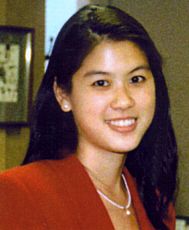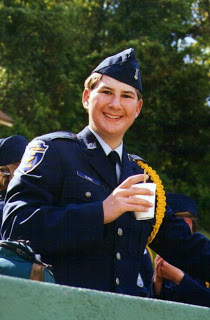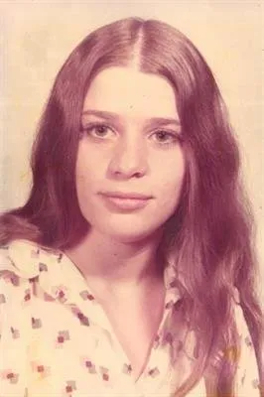Related Research Articles

Chandra Ann Levy was an American intern at the Federal Bureau of Prisons in Washington, D.C., who disappeared in May 2001. She was presumed murdered after her skeletal remains were found in Rock Creek Park in May 2002. The case attracted attention from the American news media for several years.

Etan Kalil Patz was an American boy who was six years old on May 25, 1979, when he disappeared on his way to his school bus stop in the SoHo neighborhood of Lower Manhattan. His disappearance helped launch the missing children movement, which included new legislation and new methods for tracking down missing children. Several years after he disappeared, Patz was one of the first children to be profiled on the "photo on a milk carton" campaigns of the early 1980s. In 1983, President Ronald Reagan designated May 25—the anniversary of Etan's disappearance—as National Missing Children's Day in the United States.

Joyce Chiang was an American attorney with the U.S. Immigration and Naturalization Service who disappeared on January 9, 1999, in Washington, D.C., and was later found dead. The story of her disappearance and the discovery of her remains in the Potomac River, which drew only local news coverage at the time, was rediscovered and received some national attention in the wake of the similar disappearance of Chandra Levy in May 2001. Police initially promoted the idea that she had committed suicide, but a decade later said she had been the victim of a robbery-related homicide. They identified two suspects but no one was charged with the crime. Chiang was the sister of future California State Treasurer John Chiang.

On 21 March 2002, Amanda Jane "Milly" Dowler, a 13-year-old English schoolgirl, was reported missing by her parents after failing to return home from school and not being seen since walking along Station Avenue in Walton-on-Thames, Surrey, that afternoon. Following an extensive search, her remains were discovered in Yateley Heath Woods in Yateley, Hampshire, on 18 September.

On April 21, 2015, the remains of a woman found in South Blooming Grove, New York, were identified as those of Ramona Moore. The 35-year-old woman had last been seen on July 31, 2012, re-entering her apartment in a house near Crotona Park in the Bronx, New York City. In 2014, New York City police had charged her building superintendent, Nasean Bonie, with her murder although there was no body.

The Freeway Phantom is the pseudonym of an unidentified serial killer who murdered five girls and a woman in Washington, D.C., between April 1971 and September 1972.

The Gilgo Beach serial killings were a series of murders spanning from the early 1990s until 2011. Many of the victims' remains were found over a period of months in 2010 and 2011 during a police search of the area along Ocean Parkway, near the remote beach towns of Gilgo and Oak Beach in Suffolk County, New York. The search was prompted by the disappearance of Shannan Gilbert, who, like many of the known victims, was a sex worker who advertised on Craigslist. The perpetrator in the case is known as the Long Island Serial Killer, the Manorville Butcher, or the Craigslist Ripper.
The murder of Kujoe Bonsafo Agyei-Kodie, an exchange student from Ghana, is alleged to have been carried out by Alexander Kinyua, in Joppatowne, Maryland, United States. Kinyua is alleged to have eaten Agyei-Kodie's organs in an act of cannibalism. The killing came after Kinyua was released on bail following a separate brutal attack.

The Texas Killing Fields is a title used to roughly denote the area surrounding the Interstate Highway 45 corridor southeast of Houston, where since the early 1970s, more than 30 bodies have been found, and specifically to a 25-acre patch of land in League City, Texas where four women were found between 1983 and 1991. The bodies along the corridor were mainly of girls or young women. Furthermore, many additional young girls have disappeared from this area who are still missing. Most of the victims were aged between 12 and 25 years. Some shared similar physical features, such as similar hairstyles.
Lauren Elizabeth Spierer is an American woman who disappeared on June 3, 2011, following an evening at Kilroy's Sports Bar in Bloomington, Indiana. At the time, Spierer was a 20-year-old student at Indiana University. Though her disappearance generated national press coverage, Spierer is presumed dead and her case remains unsolved.

Skylar Annette Neese was an American teenage girl who disappeared from her home in Star City, West Virginia, around midnight on July 6, 2012. Neese's body was found in January 2013, across the nearby state line, in Wayne Township, Greene County, Pennsylvania.

Zebb Wayne Quinn was an American teenager who went missing in Asheville, North Carolina. Quinn was 18 years old and working at a local Walmart when he disappeared after finishing his shift. His car was discovered several days later in a restaurant parking lot under unusual circumstances: its headlights had been left on, a live puppy had been left inside, and a drawing of a pair of lips and an exclamation mark had been scrawled in pink lipstick on the back window.

Maria Cristina Gutierrez was an American criminal defense attorney based in Baltimore, Maryland, who represented several high-profile defendants in the 1990s. She was the first Latina to be counsel of record in a case before the Supreme Court of the United States. In 2001, Gutierrez was disbarred, with her consent, following multiple complaints from clients who paid her for legal work she failed to perform. At the time, Gutierrez was dying from a combination of multiple sclerosis and diabetes, and her health was rapidly deteriorating.

Jessica Lynn Heeringa was a 25-year-old woman from Norton Shores, Michigan, who disappeared in the Exxon gas station where she was working the late shift on April 26, 2013.

Catherine Anne Cesnik was a Roman Catholic religious sister and a teacher at Archbishop Keough High School in Baltimore, Maryland, United States. On November 7, 1969, Cesnik disappeared. Her body was discovered on January 3, 1970, near a garbage dump in the Baltimore suburb of Lansdowne. Her unsolved murder served as the basis for the Netflix documentary series The Keepers in 2017.
Mackenzie Nicole Cowell was a 17-year-old American youth who went missing and was murdered in February 2010. She was last seen at the beauty school she attended in Wenatchee, Washington. Her body was discovered on the banks of the Columbia River four days later on February 13, 2010. A post-mortem examination determined she had been strangled, stabbed in the neck, and had suffered blunt force trauma to the head.
Ellen Rae Greenberg was a 27-year-old American woman who died on January 26, 2011, after sustaining 20 stab wounds; her death was ruled suicide but has been described by news media as “suicide”.

Gary Michael Hilton, known as The National Forest Serial Killer, is an American serial killer responsible for four known homicides between 2007 and 2008 committed in three states, all of which occurred within the premises of national forests. Sentenced to death in Florida and to life imprisonment in Georgia and North Carolina, Hilton remains a suspect in several other killings, including that of Judy Smith.

Linda Marie Pagano, formerly known as Strongsville Jane Doe, was an American murder victim from Akron, Ohio who was an unidentified decedent for 44 years. Following an argument with her stepfather on September 1, 1974, Pagano left her stepfather's apartment and was never seen again. On February 5, 1975, partial skeletal remains of a white female were found by three boys in a park in Strongsville, Ohio. After remaining unidentified, the bones were buried in an unmarked grave. Due to a clerical error, the bones were never entered into databases of unidentified decedents, and the case was largely forgotten about. In 2016, a college student doing genealogy research of her own family rediscovered the unidentified body. After posting about it online, the case gained the attention of Carl Koppelman, a forensic sketch artist. The new attention to the case led to a connection being made by the Akron police, and in June 2018 the remains were conclusively identified as Linda Pagano.
References
- ↑ DiMarco, Nick; Bryan P. Sears (April 21, 2011). "Investigation into Death of Teen Moves to 'New Place'". North Baltimore Patch. Archived from the original on 27 July 2011. Retrieved 22 April 2011.
- ↑ Eng, James (April 26, 2011). "Phylicia Barnes case: Arrest made in death of North Carolina teen who went missing in Baltimore in 2010". MSNBC. Archived from the original on April 28, 2012. Retrieved 26 April 2012.
- ↑ Eng, James (January 20, 2015). "Judge drops all charges against Michael Johnson". Baltimore Sun. Retrieved 20 January 2015.
- 1 2 "Police: Body found in Md. river is missing NC teen". Associated Press. April 21, 2011. Retrieved 22 April 2011.[ dead link ]
- ↑ Black, Caroline (January 4, 2011). "Phylicia Barnes Missing: Police Fear N.C. Teen Abducted in Baltimore". WJZ. Baltimore: CBS. Retrieved 21 April 2011.
- ↑ Fenton, Justin (January 3, 2011). "Police 'enormously concerned' about missing teen girl". Baltimore Sun. Retrieved 21 April 2011.
- ↑ Lyttle, Steve (Mar 28, 2011). "3 months, no trace of Phylicia Barnes". Charlotte Observer. Retrieved 21 April 2011.[ permanent dead link ]
- 1 2 "Fundraiser, Search In Phylicia Barnes Disappearance". Monroe, NC: WSOCTV.com. April 9, 2011. Archived from the original on 12 April 2011. Retrieved 21 April 2011.
- ↑ Cooke, Meghan (Apr 10, 2011). "Police search park for Monroe teen". Charlotte Observer. Retrieved 21 April 2011.[ permanent dead link ]
- ↑ "Baltimore police 'back at square one' after park search for clues in NC teen's disappearance". BALTIMORE. Associated Press. April 10, 2011. Retrieved 21 April 2011.[ permanent dead link ]
- ↑ Shine, Tom; Z. Byron Wolf; Arlette Saenz (April 21, 2011). "Phylicia Barnes, Missing North Carolina Teen, Found Dead Near Baltimore; Cause of Death Unknown". ABC News. Retrieved 22 April 2011.
- ↑ Hayes, Kevin. "Body of missing student Phylicia Barnes found in Md". WJZ. PORT DEPOSIT, Md.: CBS. Retrieved 21 April 2011.
- ↑ "Police Identify Man Found Dead Near Phylicia Barnes". Md.: WSOC. Archived from the original on 28 April 2011. Retrieved 26 April 2011.
- ↑ Martinez, Edecio (April 22, 2011). "After body of Phylicia Barnes found, investigators search for answers". CrimeSider. PORT DEPOSIT, Md.: CBS/WJZ. Retrieved 24 April 2011.
- 1 2 Fenton, Justin (May 4, 2011). "Phylicia Barnes' death ruled homicide, cause withheld". The Baltimore Sun. Retrieved 5 May 2011.
- ↑ Schaffer, Christian (2011-05-05). "Security expert discusses Barnes case: Police have confirmed Phylicia Barnes was murdered". ABC News. Archived from the original on 8 May 2011. Retrieved 8 May 2011.
- ↑ "Phylicia Barnes' Sister Wanted Restraining Order Against Ex-Boyfriend". WSOCTV. September 6, 2011. Archived from the original on 17 January 2012. Retrieved 29 November 2011.
- ↑ "Lawyer discusses Barnes' death". Charlotte Observer. English: WBTV. Sep 8, 2011. Archived from the original on 24 July 2012. Retrieved 29 November 2011.
- ↑ Desmond-Harris, Jenee (Apr 28, 2012). "Phylicia Barnes Kidnapping: Arrest Made". The Root. Archived from the original on 29 April 2012. Retrieved 29 April 2012.
- 1 2 3 Fenton, Justin (Apr 27, 2012). "Details in Phylicia Barnes murder emerge at hearing". The Root. Retrieved 29 April 2012.
- ↑ Justin Fenton (May 8, 2012). "Phylicia Barnes' death added to city's 2011 murder count" . Retrieved 20 May 2012.
- ↑ Burkins, Glenn (Apr 29, 2011). "700 gather to remember Phylicia Barnes". The Charlotte Observer. Retrieved 5 May 2011.[ permanent dead link ]
- 1 2 Justin Fenton (February 6, 2013). "Michael Johnson found guilty in killing of Phylicia Barnes". Baltimore Sun. Retrieved December 3, 2012.
- 1 2 Franco Ordoñez (February 5, 2013). "Baltimore jury continues weighing Phylicia Barnes case". Charlotte Observer. Archived from the original on April 7, 2013. Retrieved December 3, 2012.
- ↑ "Phylicia Barnes Verdict: Michael Johnson, Md. man, found guilty of second-degree murder in NC teen's death". CBS News. February 6, 2013. Retrieved December 3, 2012.
- ↑ "Accused Phylicia Barnes killer Michael Johnson to get new trial". Archived from the original on 2013-04-10. Retrieved 2013-03-20.
- ↑ Ian Duncan (January 24, 2014). "Case of Phylicia Barnes detective heads to trial". Baltimore Sun. Retrieved February 2, 2014.
- ↑ Katie Lange (February 21, 2014). "2nd trial in Phylicia Barnes' death postponed until April". WBAL-TV. Retrieved September 23, 2014.
- ↑ "Barnes case creating new advocacy for the missing". CBS Baltimore. June 29, 2011.
- ↑ "Phylicia Barnes' half brother joins Baltimore City Police Department". ABC2NEWS. April 30, 2012. Retrieved 20 May 2012.
- ↑ "'Phylicia's Law' Passes Md. House And Senate". Associated Press. April 9, 2012. Retrieved 26 April 2012.
- ↑ Michael Dresser (May 2, 2012). "O'Malley signs environment, social media bills". The Baltimore Sun. Retrieved May 20, 2012.
- ↑ "Chick-Fil-A fundraiser for Phylicia Simone Barnes Foundation". WMAR TV. May 17, 2012. Archived from the original on 30 July 2012. Retrieved 20 May 2012.